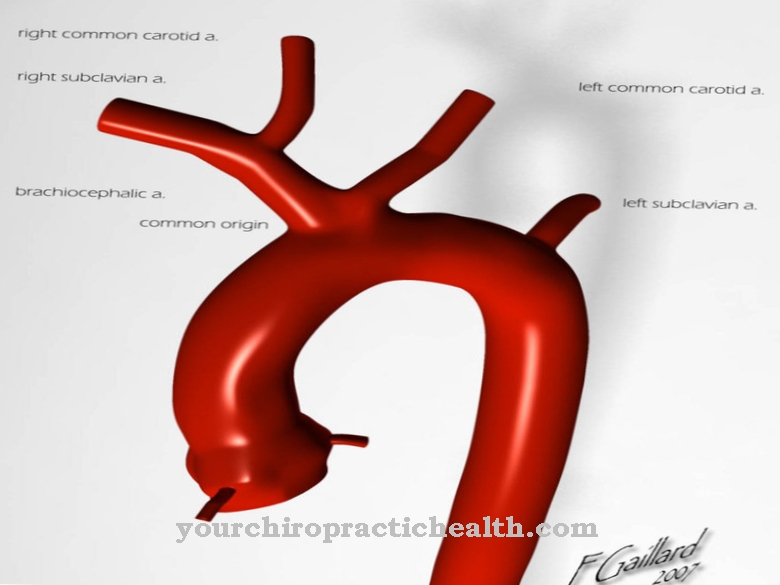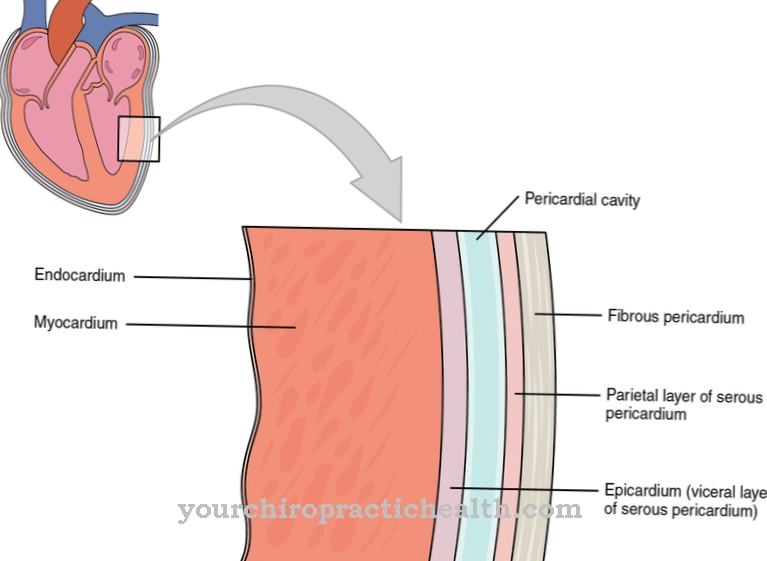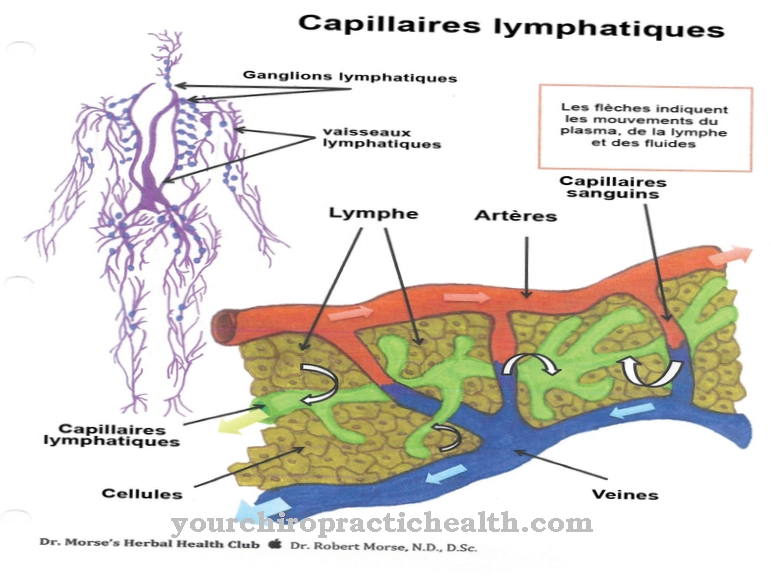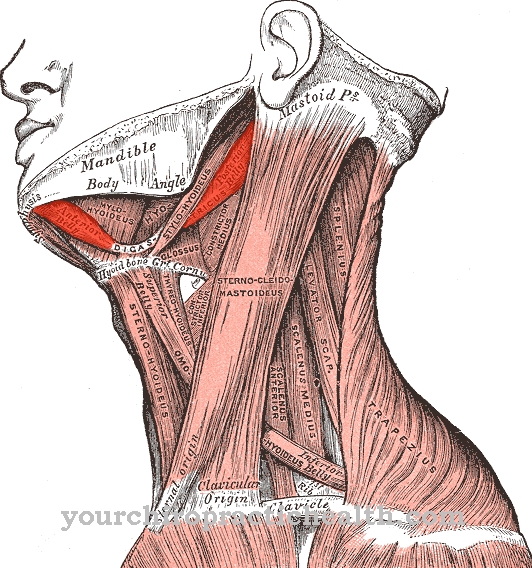The Common hepatic artery is a branch of the celiac trunk and origin of the gastroduodenal hepatic artery and the propria hepatic artery. Their task is to supply the large and small gastric curvature, large network, pancreas, liver and gall bladder.
What is the common hepatic artery?
One of the blood vessels in the abdomen is the common hepatic artery, or common hepatic artery, which supplies blood to various organs in the abdomen. The artery is part of the body's circulation and transports oxygen from the lungs to the curvature of the stomach, to the large network (omentum majus), to the pancreas (pancreas), liver and gallbladder (Vesica biliaris or Vesica fellea).
The common hepatic artery arises from the celiac trunk. He is also as Hallerscher tripod or Tripus Halleri known and owes these names to the physiologist Albrecht von Haller. In addition to the common hepatic artery, the celiac trunk has two other branches that supply blood to other anatomical structures in the abdomen as the splenic artery and the left gastric artery.
Anatomy & structure
The common hepatic artery runs through the abdominal cavity and branches off from the celiac trunk. It passes through the duodenum and runs through the hepatoduodenal ligament, which limits the omentale foramen. The remaining branch corresponds to the arteria hepatica propria; previously, the gastroduodenal artery branches off from the common hepatic artery.
In some people, the common hepatic artery has a third branch in the form of the right gastric artery. This peculiarity is not a disease, but a variation that affects about a third of all people. Most of the time, however, the right gastric artery branches off from the propria hepatic artery.
Three layers form the wall of the common hepatic artery. The tunica externa forms the outermost layer, delimits the artery from the surrounding tissue and contains the vasa vasorum. The tunica media forms the middle layer of the arterial wall. It consists of muscles that wrap around the vein in a ring and influence the flow of blood through contraction and relaxation. In addition, the tunica media has elastic fibers and collagen fibers, which give the tissue flexibility and cohesion. Under the tunica media is the tunica intima, which forms the innermost layer of an arteria and can also be found in the arteria hepatica communis.
The tunica media is bordered by the internal elastic membrane of the internal tunica, which is followed by the subendothelial stratum and the connective tissue layer. They hold the endothelium in place by a single layer of cells separating the common hepatic artery from the blood that flows through it.
Function & tasks
The central task of the common hepatic artery is to supply organs in the abdominal cavity with oxygen-rich blood. One of its branches is the gastroduodenal artery. This transports blood to the pancreas, which is of great importance for digestion and metabolism. Pancreatic cells produce digestive enzymes that break down carbohydrates, proteins and fats.
In addition, the pancreatic cells synthesize the hormones insulin, glucagon, somatostatin, ghrelin and the pancreatic polypeptide. Blood from the gastroduodenal artery also flows to the duodenum, which is 30 cm long and belongs to the small intestine. In the digestive process, its task is to enrich the food pulp with enzymes from the pancreas and duodenal glands and to neutralize the acidic pH value. The gastroduodenal artery also supplies the large network (omentum majus), which is of great importance for the defense against pathogens, and the large curvature of the stomach.
In contrast, the lesser curvature receives oxygenated blood from the arteria hepatica propria, which is the other branch of the arteria hepatica commonis. The arteria hepatica propria also supplies the liver and gallbladder with blood. The liver is involved in detoxification, stores glycogen as an energy reserve, forms ketone bodies, controls the metabolism of vitamins and trace elements, synthesizes blood proteins such as coagulation factors, albumin, globulins and acute phase proteins and plays a part in digestion by producing bile . The gallbladder stores 30 to 80 ml of the fluid and releases it into the digestive tract when needed.
Diseases
As an artery, the common hepatic artery can be affected by various diseases that are typical of all blood vessels. One of them is arteriosclerosis.
This is a narrowing of the artery caused by deposits in the cavity. Often, fat, connective tissue, lime or deposited calcium salts or thrombi are responsible for this. As a result, the blood circulation deteriorates and the vessel can even close completely.
Dunbar's syndrome does not affect the direct communal hepatic artery, but the celiac trunk, from which it arises. Dunbar syndrome is a condition also known as Harjola-Marable syndrome. The compression of the celiac trunk is characteristic. Common complaints are poor appetite, vomiting, nausea, and upper abdominal pain. Type A of Dunbar syndrome manifests itself without symptoms, while type B typically causes discomfort in the abdomen.
In contrast, type C is characterized by abdominal angina, which type B is absent. Medicine divides them into four stages, depending on their severity, with stage IV being characterized by permanent pain and can lead to death. In addition to the celiac trunk, nerves that lie in the same area can also be affected by the compression and lead to corresponding functional failures. As a result, further indigestion and pain are possible.

























.jpg)


